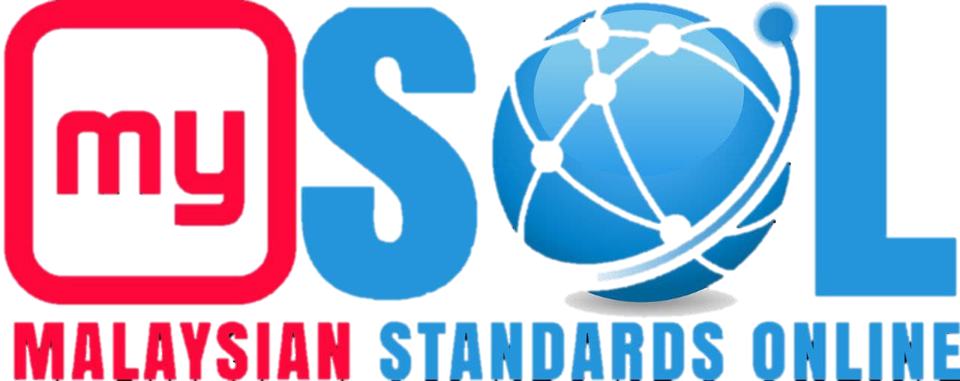FRESH, CHILLED AND FROZEN LAMB, MUTTON AND GOAT MEAT - SPECIFICATION (FIRST REVISION)
MS 548:2010Status : 1st Revision
Format : PDF
This Malaysian Standard specifies requirements for classification, conditions for chilling,
freezing and storage, and packaging of fresh, chilled and frozen Iamb, mutton and goat meat.
Fresh, chilled and frozen pork - Specification (First revision)
MS 547:2014Status : 1st Revision
Format : PDF
This Malaysian Standard specifies types, classes, grades and requirements for fresh, chilled
and frozen pork carcasses and cuts.
RECOMMENDED NOMENCLATURE FOR MALAYSIAN VEGETABLES (FIRST REVISION)
MS 546:1994Status : 1st Revision
Format : PDF
1.1 This Malaysian Standard (1st list) gives the botanical nomenclature, common names
and other names for species of commonly used vegetables in Malaysia.
1.2 The compilation of names pres
....Read more
NOT FOR SALE
"Please contact us if you are interested to purchase for reference."FRESH, CHILLED AND FROZEN BEEF – SPECIFICATION (FIRST REVISION)
MS 545:2007Status : 1st Revision
Format : PDF
This Malaysian Standard prescribes the requirements, classification, types of cuts, grading,
conditions for chilling, freezing and storage for fresh, chilled and frozen beef carcasses and
....Read more
SPECIFICATION FOR FRESH, CHILLED AND FROZEN BEEF
MS 545:1978Status : Original
Format : PDF
This Malaysian Standard Specification prescribes muscular, external and interior fats
the requirements for fresh, chilled and frozen beef
carcasses and cuts.
NOT FOR SALE
"Please contact us if you are interested to purchase for reference."CODE OF PRACTICE FOR STRUCTURAL USE OF TIMBER: PART 3 : PERMISSIBLE STRESS DESIGN OF GLUED LAMINATED TIMBER
MS 544 : PART 3:2001Status : Withdrawn
Format : PDF
Glued laminated timber (glulam) should be manufactured in accordance with MS 758 : 2001 and Clause 4. All timber used for laminated members should be strength graded in accordance with BS 5756 or equi ....Read more
NOT FOR SALE
"Please contact us if you are interested to purchase for reference."CODE OF PRACTICE FOR STRUCTURAL USE OF TIMBER : PART 6 : WORKMANSHIP, INSPECTION AND MAINTENANCE (FIRST REVISION)
MS 544 : PART 6 :2001 (CONFIRMED:2020)Status : 1st Confirmation
Format : PDF
This part gives recommendations for the preparation, fabrication, inspection, storage,
handling and maintenance of materials and components. The recommendations given in this part are necessary
....Read more
CODE OF PRACTICE FOR STRUCTURAL USE OF TIMBER : PART 4 : TIMBER PANEL PRODUCTS : SECTION 4 : ORIENTED STRAND BOARD (OSB)
MS 544 : PART 4 : SECTION 4 : 2001 (CONFIRMED:2020)Status : 1st Confirmation
Format : PDF
This Section gives recommendations for the use of Oriented Strand Board (OSB) in
construction. The panels in conformance to this Section are intended for use as floor and wall
sheathings
....Read more
CODE OF PRACTICE FOR STRUCTURAL USE OF TIMBER : PART 11 : RECOMMENDED SPAN TABLES AND THEIR CALCULATIONS : SECTION 3 : CEILING BINDERS
MS 544 : PART 11 :SECTION 3 : 2001 (CONFIRMED:2020)Status : 1st Confirmation
Format : PDF
This Section of MS 544 : Part 11 recommends a calculation basis for the permissible clear span of ceiling binders used in traditional pitched roof construction, i.e. not including trussed roofs. The m ....Read more
CODE OF PRACTICE FOR STRUCTURAL USE OF TIMBER : PART 2 : PERMISSIBLE STRESS DESIGN OF SOLID TIMBER (FIRST REVISION)
MS 544: PART 2: 2001Status : 1st Revision
Format : PDF
This Part gives recommendations for the structural use of the Malaysian hardwood and
softwood timber species in load bearing members. It includes recommendations on quality,
grade stresses
....Read more
